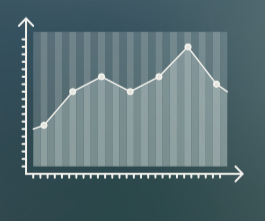11.21.2025
Sausage casings bulletin, November 21, 2025

...

However, selling above the 50-day moving average limited the advance and left the November contract to settle well below the high of the day. Strength in the Canadian dollar also weighed on canola prices, which remain range-bound.
Light profit-taking drove rapeseed futures marginally lower on Monday with most contracts down less than 1/4 percent (November contract -€0.50 per tonne). The short term correction is a healthy move in the longer-term bull market in rapeseed futures. Selling at the upper Bollinger band triggered the profit-taking, but futures remain just below life-of-contract highs and are likely to continue to move higher.
Soybean futures rallied more than one percent (November contract +9 3/4 cents per bushel) on anecdotal reports that indicated Chinese buyers bought 10 cargos of U.S. soybeans on Monday.
Futures were sharply higher shortly after the beginning of U.S. trading hours as rumors of purchases of up to 32 cargos triggered fund buying, but as confirmed reports lowered the total nimble traders took profits and drove prices lower. Concerns about excessively wet conditions in portions of the Corn Belt also contributed to the bullish sentiment and futures were also supported by technically-driven buying at the 10-day and 50-day moving averages. Funds were reported buyers of 9,000 soybean contracts, 2,500 soybean meal contracts, and were reported sellers of 2,000 soybean oil contracts.
Spreading by the funds drove soybean oil futures a little more than 1/4 percent lower (December contract -9 basis points per pound) despite the rally in soybean prices. Soybean oil prices tried to follow soybean futures higher early in the session as buying at the 10-day, and 200-day moving averages supported prices shortly after the open. However, the liquidation of a small portion of the massive increase in the long oil share position by the funds during the week ending September 7 (according to the latest data from the Commodity Futures Trading Commission’s Commitments of Traders report) drove the December contract back through those technical triggers, which accelerated the selling and decline in prices. In the end, the December contract extended the move lower that started last week and set futures up to continue to move lower in the short term.
Overnight weakness in soybean oil futures and concerns about slowing export demand and rising production continued to weigh on palm oil futures with most contracts down more than one percent (January contract -31 ringgit per tonne). Technical selling at the 200-day moving average added to the decline but buying at the lower Bollinger band limited losses. However, futures settled near the low of the day and are rapidly closing in on the shoulder level of a head and shoulders pattern that could trigger additional selling and drive the January contract down to test the 2,200-ringgit level. Presentations at an industry conference later in the week are likely to set the tone for palm oil futures in the short term, and position squaring ahead of the conference may result in some short-term support over the next day.
Chinese vegetable oil futures were marginally higher on Monday with palm oil futures gaining less than 0.1 percent (January contract +4 yuan per tonne) and soybean oil contracts up 0.1 percent (January contract +6 yuan per tonne). Vegetable oil futures continue to consolidate the sharp gains in August but are close to the bottom of the recent range. The sharp decline in palm oil futures have weighed on values, but the country remains short of vegetable oil due to the significant reduction in soybean crushing volumes due to the outbreak of African Swine Fever (ASF).